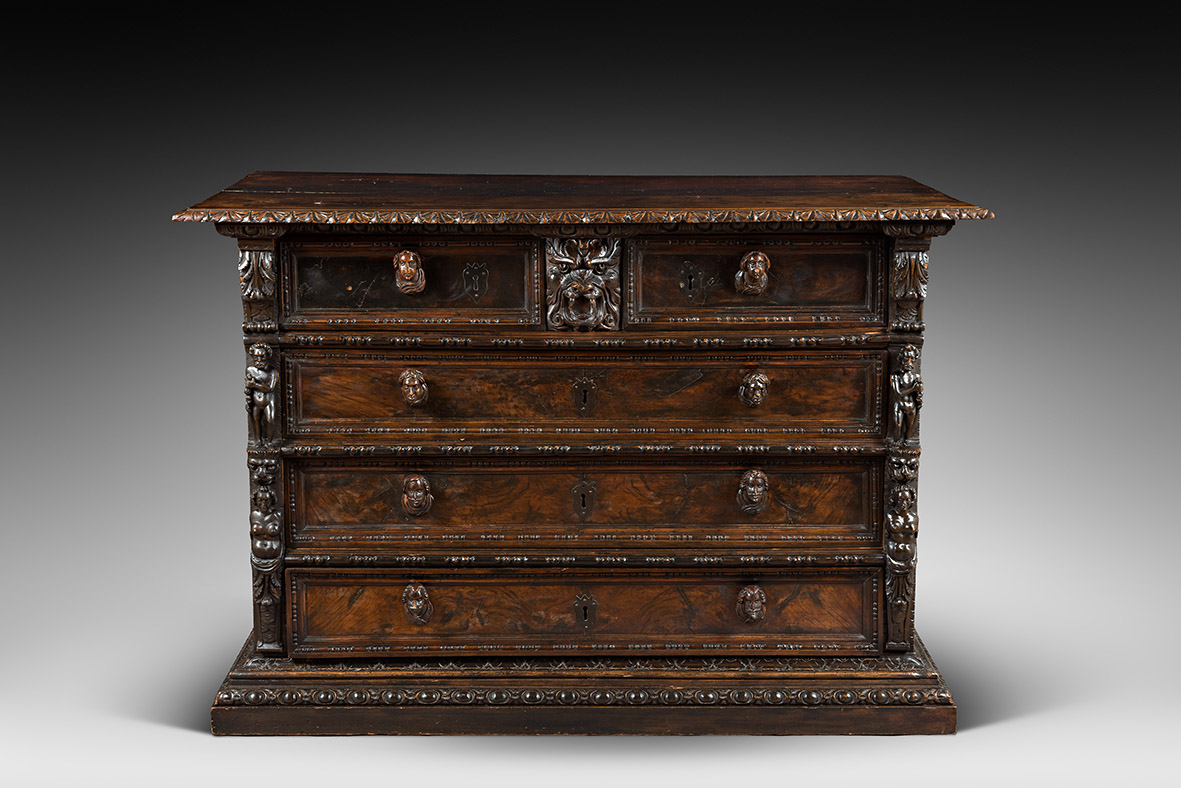Description
This walnut wood and walnut burl cassetone is a remarkable example of Mannerist art applied to furniture in the late 16th century.
While the Mannerist movement appeared and grew in Florence before acquiring its international stature it also spread to Northern Italy as soon as the late 16th century early 17th century.
To the opposite of the rest of Italy where Classic motifs are adopted very early, northern regions maintain the use of Renaissance motifs very late all through the 17th century. Sculpture now leaving the austere environment of churches and civil buildings appear in private homes where it graces state rooms and studies.
This craze is particularly expressed on furniture from Liguria and particularly in Genoa where are produced highly carved furnitures with figures and spectacular decors called bambocci. This typically Genoese pieces express nonetheless a Florentine origin through Mannerism.
This Genoese chest is framed by small figures skilfully carved from one wood chunk then applied on each side. Getting inspiration from bambocci those figures celebrate life and divinities of the nature, creatures of water and forests and Atlas-like putti.
The upper drawer decor is centred around a lion head creating the illusion of two lateral drawers.
The four elongated drawers are framed with pearl friezes, each holding two beautifully made human face-like handles and a central keyhole.
In addition to its splendid decor this chest also shows a real harmony in proportions, a perfect mastery of volumes and spaces. In spite of few restorations of use this chest is in an astounding condition.
Bibliography
L’arte del mobile in Italia par Silvanno Colombo
Il Mobilio gli ambiant e le Decorzioni des Rinascimento in Italia par Augusto Padrini
Il mobilio in Ialia par Augusto Pedrini, 1948.

